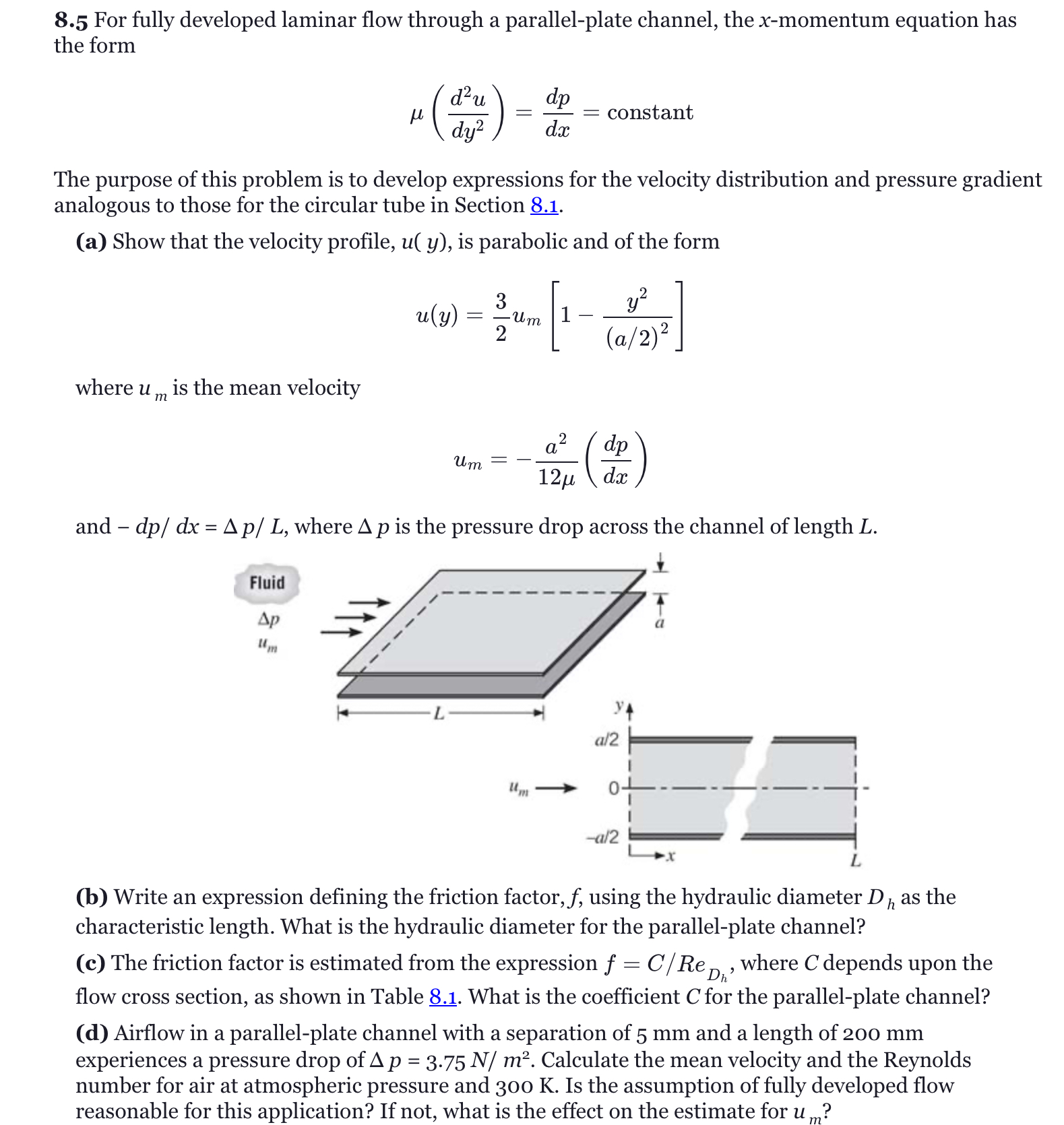Home /
Expert Answers /
Mechanical Engineering /
8-5-for-fully-developed-laminar-flow-through-a-parallel-plate-channel-the-x-momentum-equation-has-t-pa457
(Solved): 8.5 For fully developed laminar flow through a parallel-plate channel, the x-momentum equation has t ...
8.5 For fully developed laminar flow through a parallel-plate channel, the x-momentum equation has
the form
\mu ((d^(2)u)/(dy^(2)))=(dp)/(dx)=constant
The purpose of this problem is to develop expressions for the velocity distribution and pressure gradient
analogous to those for the circular tube in Section 8.1.
(a) Show that the velocity profile, u(y), is parabolic and of the form
u(y)=(3)/(2)u_(m)[1-(y^(2))/(((a)/(2))^(2))]
where u_(m) is the mean velocity
u_(m)=-(a^(2))/(12\mu )((dp)/(dx))
and -d(p)/(d)x=\Delta (p)/(L), where \Delta p is the pressure drop across the channel of length L.
(b) Write an expression defining the friction factor, f, using the hydraulic diameter D_(h) as the
characteristic length. What is the hydraulic diameter for the parallel-plate channel?
(c) The friction factor is estimated from the expression f=(C)/(R)e_(D_(h)), where C depends upon the
flow cross section, as shown in Table 8.1. What is the coefficient C for the parallel-plate channel?
(d) Airflow in a parallel-plate channel with a separation of 5 mm and a length of 200 mm
experiences a pressure drop of \Delta p=3.75(N)/(m^(2)). Calculate the mean velocity and the Reynolds
number for air at atmospheric pressure and 300 K . Is the assumption of fully developed flow
reasonable for this application? If not, what is the effect on the estimate for u_(m) ?